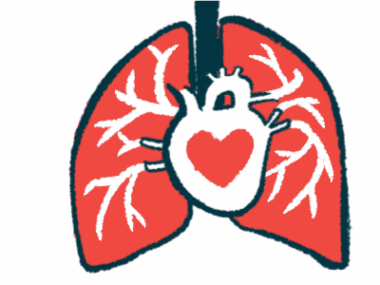Key cell differences due to antibody type found in diffuse SSc patients
Findings show importance of autoantibodies in managing rare disease
Written by |

People with diffuse systemic sclerosis (dcSSc) — a form of scleroderma that typically involves more extensive skin damage — have key cellular differences depending on the specific self-reactive antibody they have, and on how far along the disease trajectory they are, according to a new study.
These differences were mainly seen in fibroblasts, a type of connective tissue cell involved in the TGF-beta pathway that is implicated in inflammation.
In particular, the TGF-beta response in fibroblasts was seen mainly in early disease, and in patients with self-reactive antibodies known as ATA autoantibodies, one of the two main types of autoantibodies in dcSSC patients.
“These differences reinforce the importance of considering autoantibody and stage of disease in management and trial design in SSc,” the researchers wrote.
The study, “Single-cell analysis reveals key differences between early-stage and late-stage systemic sclerosis skin across autoantibody subgroups,” was published in the journal Annals of the Rheumatic Diseases.
Investigating disease stage, role of autoantibodies in dcSSC
SSc, also known as scleroderma, is characterized by thick and hardened skin caused by excessive production of collagen, a main component of scar tissue.
In diffuse SSc, patients are more likely to have extensive skin damage and have a higher risk of internal organ damage. Skin thickness depends on disease stage, usually worsening at early stages, then easing at later stages.
Moreover, the severity and evolution of skin involvement in dcSSc depend on the presence of specific autoantibodies. In particular, patients with ARA autoantibodies generally experience greater lessening of skin thickness over time, whereas those with the ATA type of autoantibodies have a high risk of lung fibrosis (scarring) regardless of the extent of skin involvement.
Researchers in the U.K. now sought to understand whether gene expression, also called gene activity, may be associated with the scleroderma disease stage and the presence of autoantibodies. To learn more, the team compared patients with dcSSc to healthy people, who served as controls.
Knowing the “cellular mechanisms underlying distinct trajectories will give insight into the drivers of improvement in SSc,” the researchers wrote.
In their study, the scientists looked at RNA — a molecule that contains information from the genes to produce proteins — in skin cells obtained from the forearm of 12 patients and three controls.
The patients had a median age of 58.1, were mainly women (80%), and had a median disease duration of around seven years. They were divided into early-stage disease, with a mean duration of 2.75 years, and late-stage disease, where the mean duration was 17.5 years. The two groups had the same number of participants with ARA or ATA autoantibodies.
Findings may have ‘important implications for trial design’ in dcSSc
In total, the researchers analyzed 124,735 cells. Key genes helped identify 28 clusters.
In keratinocytes, the most abundant cells in the epidermis — the outermost layer of the skin — the researchers found gene expression differences between early- and late-stage disease.
They specifically looked at the expression of ADAMTS1, a gene that codes for a protein involved in structural alterations to the extracellular matrix — a network of molecules that maintain cell structure — and EREG, a gene that codes for a growth factor. The activity of both genes increased with disease duration.
Additionally, eosinophils, which are immune cells implicated in inflammation, were more abundant during early-disease stages and in patients with ARA antibodies. They resolved in later stages of the disease.
In fibroblasts, cells responsible for producing collagen, 10 gene clusters were identified. The team found notable differences in cell abundance by stage of disease, as well as clear differentiation between patients and controls.
Still in fibroblasts, there were fewer genes with abnormally high expression during later-stage disease in ARA patients. In contrast, ATA patients showed greater gene expression differences specific to SSc stages.
“This may suggest activated genes are not ‘switching off’ in later ATA disease,” the researchers wrote.
Our findings have important implications for trial design, including future targeted therapeutics, to ensure that most informative patients are recruited into early-stage clinical trials.
A comparison between ARA-positive and ATA-positive patients in a specific fibroblast cluster revealed unique autoantibody differences in early-stage SSc. These may explain some clinical differences, the scientists said. For instance, the activity of POSTN and SFRP4, genes associated with fibrosis, was more abundant in early ATA patients.
Further analysis revealed that genes associated with cell growth and survival pathways — VEGF, PDGF, and TNF — are increased in later stages of disease in the ATA subgroup, and in early stages in patients with ARA autoantibodies.
In particular, in patients with early-stage disease and ATA autoantibodies, TGF-beta response was mainly seen in fibroblasts and smooth muscle cells. In patients with early disease and ARA autoantibodies, TGF-beta response mainly occurred in endothelial cells, which line blood vessels. This reflects “broader differences between clinical phenotypes and distinct skin score trajectories across autoantibody subgroups of dcSSc,” the investigators wrote.
“Differences in [TGF-beta] signal response between ATA and ARA positive early [diffuse SSc] patients may help understand recent findings in clinical trials of targeted biological therapy,” the researchers wrote.
“Our findings have important implications for trial design, including future targeted therapeutics, to ensure that most informative patients are recruited into early-stage clinical trials,” they added.
As for study limitations, the scientists mentioned the small number of participants in each group.







